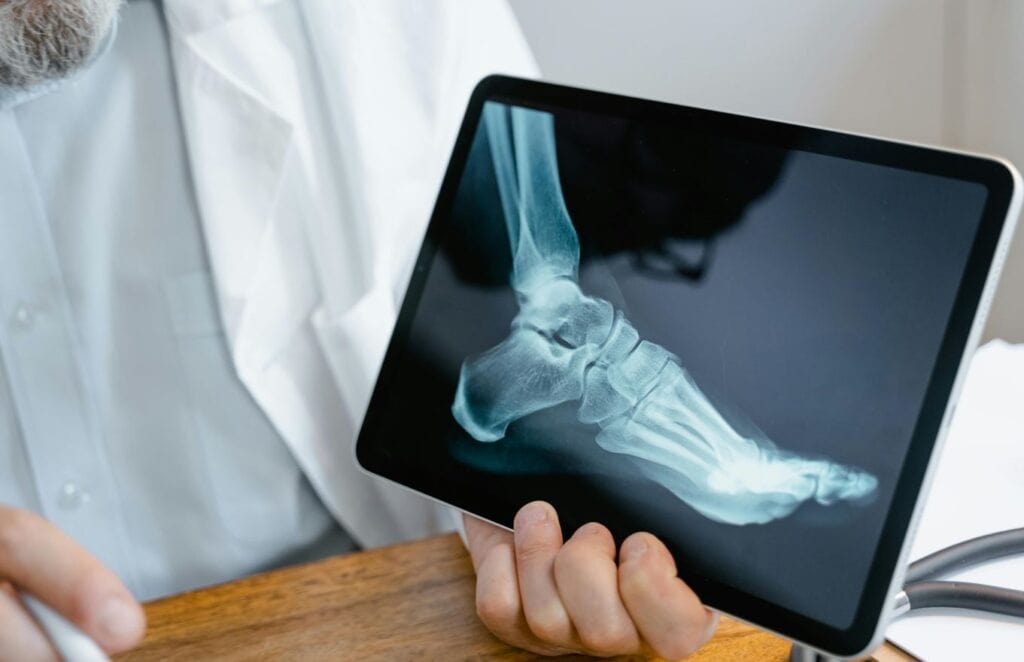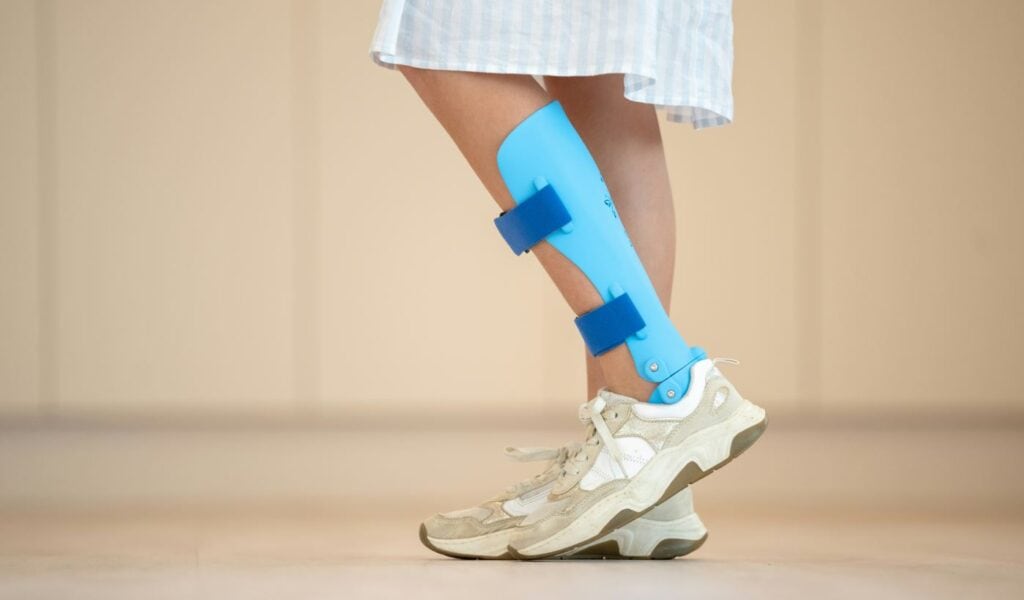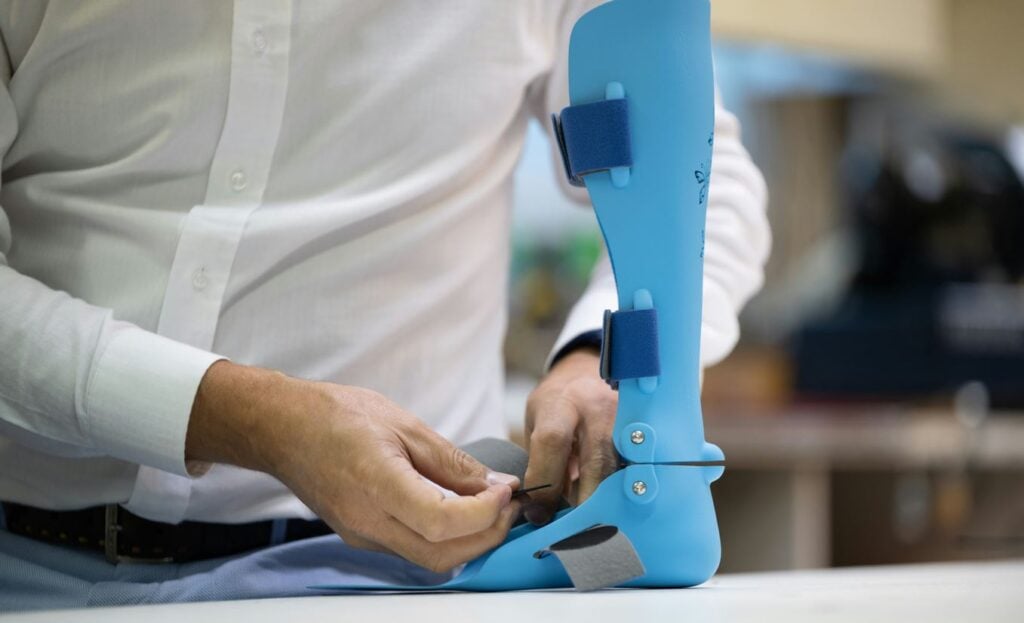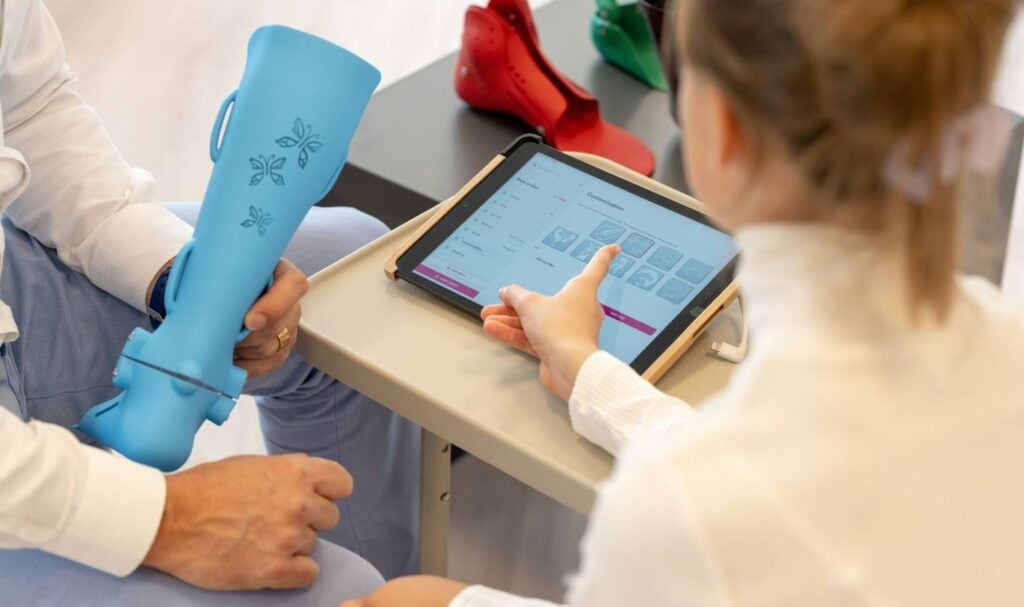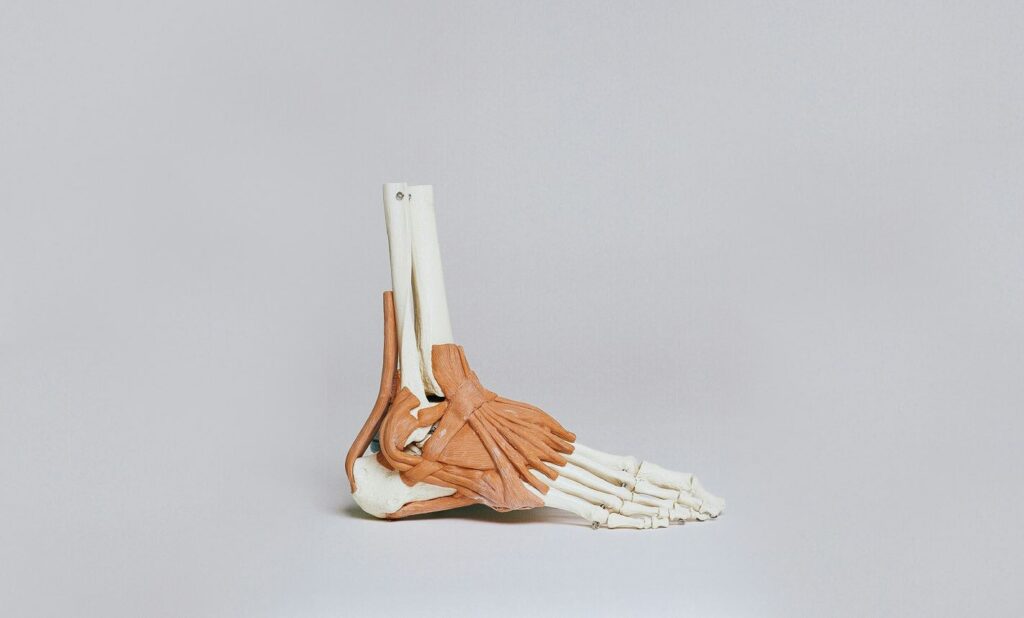Orthotics and shoe insoles can improve foot health and comfort for runners, professionals on their feet all day, and those with foot pain. Shoes with support are crucial in Australia, where lifestyles include urban commutes and outdoor activity. It's natural to ask how long orthotics or insoles last.
Let's Get Straight To The Point
Orthotics and shoe insoles improve foot health but have different lifespans. Custom orthotics typically last 2-5 years with proper care, while insoles need replacement every 3-12 months, depending on material and usage.
Their durability is affected by factors like material quality, frequency of use, footwear compatibility, and maintenance. Worn-out foot supports can cause pain, mobility issues, and misalignment, impacting overall health.
Regular checks and timely replacements are essential for maintaining foot comfort and preventing long-term problems. Sustainable practices like recycling can reduce environmental impact.
Understanding Orthotics and Insoles
Orthotics and shoe insoles provide support and comfort but serve different goals and meet different demands. Custom orthotics are manufactured for each person's foot. Health care providers evaluate them with biomechanical analysis, foot mapping, and occasionally 3D imaging. This ensures the orthotics match the foot's unique shapes and solve medical ailments or alignment concerns. Depending on the patient's needs, they can be made of hard polymers for structural support or softer materials for cushioning.
Insoles are not personalised like orthotics. They are ready-made and available in stores and online. They fit various people and shoe types. They use common materials like foam, gel, or both to increase comfort, fit, or shock absorption. Insoles are useful for people without major foot issues who want more comfort, especially when standing or walking. They can be simply replaced between shoes.
Their applications differ; hence, the difference is important. Professionals use orthotics to treat health conditions. To prevent future issues, they are essential for anyone with persistent foot discomfort, structural foot abnormalities, or gait correction. However, insoles improve comfort and are ideal for daily usage. This knowledge helps people choose the optimum foot support for their health and lifestyle. The goal is to support the feet for an active and healthy life, whether with orthotics or insoles.
Lifespan of Orthotics
1. Impact of Material Quality on Durability
The materials utilised to make bespoke orthotics affect their durability. Orthotic materials range from stiff plastics and carbon composites for structural support to silicone or polyurethane for comfort. Harder materials are more durable and maintain structural integrity over time, ensuring the orthotic provides the optimum support. Softer fabrics are comfortable but may compress and wear out faster. Thus, orthotics' comfort, function, and lifetime depend on their substance.
2. Role of Usage Patterns in Wear and Tear
The frequency and nature of orthotic use are critical in determining their lifespan. Athletes and active people's everyday orthotics degrade faster. Running or other high-impact sports require wearing orthotics faster than walking or doing mild everyday activities. Users should examine how their lifestyle affects orthotic wear and tear and adjust expectations.
3. Effects of Footwear Compatibility
The longevity of orthotics depends on their footwear compatibility. Orthotics fit certain shoes; therefore, not all fit all. Incorrect alignment and uneven wear might reduce orthotics' efficacy and longevity when worn in unfit shoes. Users should tailor their orthotics to each pair of shoes they want to use them with and consider using various orthotics for different shoes.
4. Importance of Maintenance
Orthotics must be properly maintained to last. This involves frequent cleaning to eliminate dirt and moisture, degrading materials and damaging critical components. Orthotics should be stored dry and not deformed. The orthotic provider may advise users to avoid severe temperatures and monitor for wear.
5. Expected Lifespan and Professional Evaluation
Despite best practices in care and usage, orthotics generally have a finite lifespan and should be professionally evaluated periodically. Although user conditions vary, most orthotics should be changed every two to five years. Annual foot care specialist visits are advised. The expert can evaluate the orthotics, make changes, and decide whether a replacement is needed during these examinations. The orthotics' therapeutic advantages and assistance are maintained by periodic examination.
Orthotics' longevity depends on material quality, usage patterns, footwear compatibility, and upkeep. Understand and manage these elements to keep orthotics working for as long as feasible.
Lifespan of Shoe Insoles
1. Variability Based on Material Choices
Material composition greatly affects shoe insole longevity. Foam, gel, and rubber insoles have varied wear properties. While foam insoles are popular, they can compress and lose their cushioning characteristics faster than other materials. Gel insoles absorb shock well but degrade faster under strain. Rubber insoles are more durable than foam or gel insoles but offer less comfort. The insoles' comfort, support, and lifespan depend on their substance.
2. Influence of Usage Intensity
How often and how insoles are worn affects their longevity. Daily-use insoles, especially those in running shoes or work boots, wear out faster than infrequent or light-use insoles. More intense exercises accelerate insole wear. When evaluating the insole lifespan, users should consider their activities and needs.
3. Care and Maintenance
Shoe insoles last longer with proper care. Moisture and germs may destroy insoles, so keep them clean and dry. Insoles can also be removed to air out shoes between wears to keep them in shape. To prolong insole life, users should check for compressions or tears and clean them according to the manufacturer's instructions.
4. Typical Replacement Timelines
Custom orthotics last longer than non-prescription shoe insoles. Depending on quality and usage, everyday footwear insoles should be replaced every three to nine months. Professional sports insoles may last a year and be consistently used. Users should check their insoles and replace them when they no longer support or comfort them or show symptoms of wear.
Material quality, usage intensity, and maintenance affect shoe insole longevity. Users may maintain comfort and support by recognising these aspects and actively controlling insole maintenance, improving foot health and well-being. Regular insole inspections can indicate when to replace them, guaranteeing optimal footwear performance.
When to Replace Them
1. Identifying Visible Wear and Tear
Visible wear and tear indicate that orthotics or insoles need replacing. Orthotics that show fractures, significant thinning, or structural failure are no longer supporting. Similar symptoms of physical degeneration include severe compression where the foot applies the most pressure, rips, or material separating from the foundation for insoles. These changes indicate that the insoles or orthotics no longer work well and may cause foot problems.
2. Monitoring Comfort and Support Levels
Orthotics and insoles support and relieve pain. Your orthotics or insoles may wear out if you have new or recurring pain. Support is essential for controlling plantar fasciitis, arch discomfort, and heel spurs. When orthotics or insoles no longer relieve discomfort, they must be changed.
3. Assessing Fit and Functionality
Insole or orthotic fit changes might also signal a replacement. The material may have compressed or worn out if your shoes seem looser or tighter with the same insoles or orthotics or if the foot feels less secure. If orthotics or insoles wander around within the shoe or no longer line with the foot, they may need to be replaced due to inadequate support and pain.
4. Consulting with Professionals
Podiatrist visits can assist in determining when to update orthotics. These experts can detect wear and functionality you may not notice. They can also alter or propose new custom orthotics if your feet change shape or condition. Over-the-counter insoles should be replaced within their manufacturer's recommended lifespan to maintain foot support.
Identifying whether orthotics or insoles need changing is essential for foot health and comfort. Paying attention to obvious wear, comfort levels, fit and function, and expert consultations can help prevent foot issues and maintain mobility and quality of life by supporting your feet.
Health Implications of Worn-Out Orthotics and Insoles
Wearing outdated orthotics and insoles can cause various health complications beyond foot pain. The reduced support might initially worsen plantar fasciitis or flat feet, causing discomfort and slowing recovery. Due to poor cushioning and alignment, the feet may strain more and develop bunions and heel spurs.
Worn orthotics and insoles affect biomechanical alignment. Unsupported feet might cause postural imbalance, typically resulting from misalignment in the foot, knee, hip, and lower back. Chronic pain in these regions can worsen foot support discomfort.
Using worn-out foot supports can also affect mobility. Poor foot health can hinder walking, running, and other physical activities. Mobility loss limits exercise and daily activities and might have serious psychological repercussions. Reduced physical exercise can raise stress, anxiety, and depression since regular movement improves mental health.
Constant pain and movement restrictions might lower the quality of life. Walking in the park, doing sports, or shopping might be uncomfortable and difficult. This can make people avoid socialising, affecting mental health and well-being.
Given these risks, orthotics and insoles must be monitored and replaced as needed. Keep these supporting devices in good condition to sustain foot health, quality of life, and general well-being. Replace worn orthotics and insoles regularly to avoid many issues and encourage a more active, healthy, and joyful lifestyle.
Environmental Considerations of Disposal and Recycling
Orthotics and insoles have serious environmental impacts, yet they get less attention than other medical or personal care waste. Many orthotics and insoles use non-biodegradable polymers, synthetic fibres, and composite foams. These materials are durable and function well but pose environmental issues after use.
Orthotics and insoles are often discarded in landfills, where they might last for centuries. This increases landfill space and the risk of chemicals leaking into soil and groundwater, harming local ecosystems and human health. These items deplete non-renewable resources and increase their carbon footprint during manufacturing and disposal.
Some industrial sustainability efforts have been launched in response to these difficulties. Orthotics and insole recycling programmes are being developed, but not widely. These programmes gather, break down, and reuse discarded materials into new goods. This reduces waste and virgin material use, conserving resources and lowering environmental impact.
Developing and using eco-friendly materials in orthotics and insoles are also growing. Innovative materials are recyclable, biodegradable, or renewable. These innovations make foot care products more sustainable, supporting environmental goals, including waste reduction and resource conservation.
Manufacturers, customers, and healthcare practitioners must reduce the environmental effects of orthotics and insoles. Manufacturers must innovate and increase product sustainability. When feasible, consumers and healthcare practitioners should recycle and buy sustainable items. These initiatives are essential for reducing the environmental impact of orthotics and insoles and boosting sustainability.
Conclusion
In conclusion, Australians' busy and diversified lives make orthotics and shoe insole lifespans important. Understanding that orthotics, especially custom-made ones, may last two to five years with good care. At the same time, shoe insoles need replacement every three to twelve months, depending on material quality, use, and upkeep.
People must regularly check their orthotics and insoles and replace them as they wear out. This preventive method provides ongoing comfort and support and prevents foot-related health conditions that might hinder Australians' busy lifestyles. Choosing sustainable products and recycling may also improve health and the environment.
Awareness of the condition and lifetime of orthotics and insoles may help Australians make informed foot health decisions and enjoy life's walks, runs, and treks in comfort and safety.
Frequently Asked Questions
Depending on material quality, frequency of usage, and activity, orthotics endure two to five years. Podiatrists can identify replacement needs with regular exams.
Observe insoles for thinning, compression, cracks, or loss of support and comfort. If your insoles no longer relieve pain, you may need new ones.
Activity can substantially alter orthotics and insole longevity. Running and sportswear out insoles faster than walking or office work.
Absolutely! Cleaning, drying, and storing them properly helps improve their longevity. After using shoes, remove the insoles to air them out to avoid moisture breakdown.
There are other ways to recycle orthotics and insoles. Contact local recycling programmes or speciality recycling facilities that accept these goods. When disposing of orthotics and insoles, sustainable materials reduce environmental effects.

